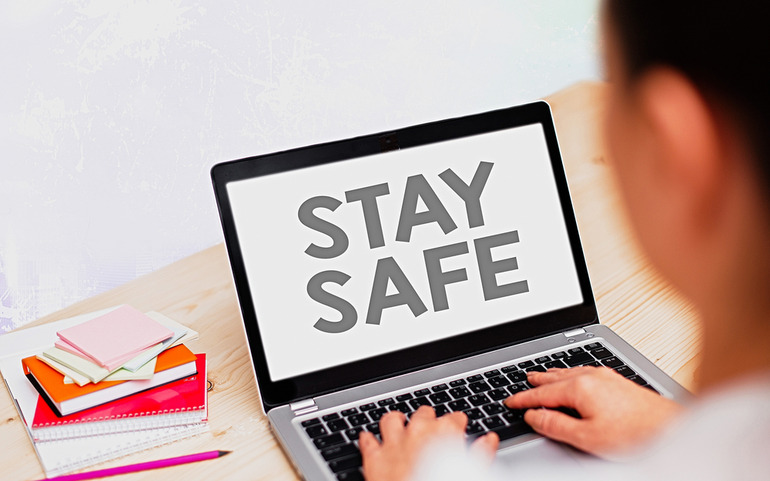Customers face both lucrative opportunities and risks while accessing the vast connected online space. Every online action, including clicking links, entering an email, or downloading files, creates risks to your online security. Every day in the digital frontier, data breaches together with identity theft and malware attacks, and phishing scams take place as real events. So, how can you maintain safe browsing activities while ensuring the security of your personal information?
People must adopt proper habits and remain mindful about online threats in a similar manner to how breweries and homebrewers preserve brewing equipment cleanliness. Digital contamination resulting from one mistake can harm your complete internet security, just like contamination from one beer contaminant ruins an entire beer batch. This article shows you essential procedures that protect individuals while browsing websites at any level of technical expertise.
Understanding the Risks
First, it’s critical to understand what you’re up against.
- Phishing is responsible for more than 36% of all data breaches, according to the 2023 Verizon Data Breach Investigations Report.
- Malicious ads, known as malvertising, can install malware without even requiring a click.
- Public Wi-Fi networks are often unsecured, making it easy for attackers to intercept your data.
- Some websites track every move you make, collecting behavioral and personal data that could be sold or misused.
You might think, “I’m just reading the news or shopping online—how dangerous can that be?” But cybercriminals count on that exact mindset. The most successful attacks often occur when users assume they’re safe.
Tip 1: Verify URLs Before Clicking
Not all links are equal. A deceptive link might appear harmless—until it isn’t. For example, a link that looks like www.amazon.com could actually lead to www.amaz0n-login.com, a phishing site designed to steal your credentials.
Always hover over a link to preview the full URL before clicking. If you’re using a mobile device, press and hold the link to inspect it. Also, avoid shortened links from untrusted sources. Services like bit.ly or tinyurl mask the destination. That’s convenient for sharing, but risky for security.
Tip 2: Use Strong, Unique Passwords
The same password across all your accounts creates an enormous security threat for you. The breach of a single website will inevitably occur, and attackers can use the stolen password to attempt access to other accounts. Attackers automate the process of using breached passwords against multiple accounts; this security threat is known as credential stuffing. The solution? Create separate strong passwords that must differ between each site you visit. Password managers help manage the inconvenience of password creation by producing and saving secure passwords, which users only need to remember a single master password.
A Google research from 2022 shows that 65% of users maintain identical passwords between their different accounts. Cease being included in this statistical data. Commercial users must adopt intentional security measures, starting with separate strong passwords for each digital account. Smaller mistakes need to be prevented from adulterating your finished product.
Tip 3: Use a VPN on Unsecured Networks
A VPN encrypts your internet traffic, making it unreadable to anyone trying to snoop. If you download VPN apps for Android, the system will hide your IP address, reducing your digital footprint and protecting your privacy. Think of VPN apps as a private tunnel through a very public space. Moreover, a good Play Store VPN, like VeePN, can unblock access to a large list of apps that are unavailable by default in your region. If you’re accessing personal emails, banking apps, or any site requiring a login, a VPN isn’t optional—it’s essential.
Tip 4: Use HTTPS Websites Only
Check for the lock symbol, which appears at the browser address bar for protection. Your browser secures the exchange of data between it and your website through the HTTPS encryption protocol.
Check sites carefully because the padlock indicator cannot indicate site safety. An encrypted connection indicates that the site uses protection methods, but the site cannot be trusted to be safe. The practice of entering personal information must be restricted to websites that employ HTTPS encryption.
Tip 5: Beware of Pop-Ups and Fake Alerts
“You have a virus! Click here to scan your device now!” Ever seen that? It’s a classic scare tactic. Pop-ups pretending to be antivirus alerts are usually trying to trick you into downloading malware or giving up personal information. Close them immediately, don’t interact at all.
Use a browser that blocks pop-ups or install an extension designed to filter them. And if a site feels shady, trust your instincts and exit.
Tip 6: Limit What You Share
We tend to post excessive information through online channels, particularly within social media platforms. Higher disclosure of your personal information gives hackers more resources against you.
Consider providing only nicknames instead of your actual birthday details, along with location information, while refraining from showing photos of your house. Security question answers and impersonation attacks become possible for cyber criminals through the online details you reveal.
You need to understand that your privacy settings provide no complete protection. A Pew Research Center survey conducted in 2021 revealed that 79% of Americans are worried about businesses using their online personal information. It’s a valid concern.
Tip 7: Avoid Public Wi-Fi or Use Protection
Public Wi-Fi is convenient, but it’s not safe by default. Attackers can create fake hotspots with names like “Free Coffee_Shop WiFi” to intercept your data. Even legitimate networks might be insecure.
If you must use public Wi-Fi, avoid accessing sensitive information like banking or email. You can also use VeePN to protect yourself from hacker attacks on public networks. Better yet, use a secure personal hotspot.
Tip 8: Be Cautious With Downloads
The delivery of malware occurs through several common channels, which include programs with free cost and pirated content as well as browser extensions. Get files only when the source appears trustworthy to you. Any doubtful file should undergo VirusTotal scanning before you attempt opening it. Avoid believing in unbelievable offers, such as inexpensive software duplicates, because they often prove to be untrue.
Stay Alert and Stay Secure
Preparedness constitutes the essential aspect of online safety protection rather than expressing paranoia. The application of online safety tips enables users to explore the internet with higher security despite its lack of built-in protective measures. In homebrewing, just like in life, careful attention to details alongside proactive steps will stop off-flavors from developing and produce top-quality batches.
All the difference comes from being curiously skeptical while also being thoughtful during both your online browsing and homebrewing adventures. You should always think your data holds greater worth than you plan, since that reality is exact. Using your awareness as your defense against threats is the most effective strategy you have. Steering clear of the internet is not the answer, but utilizing it effectively constitutes the correct approach.








